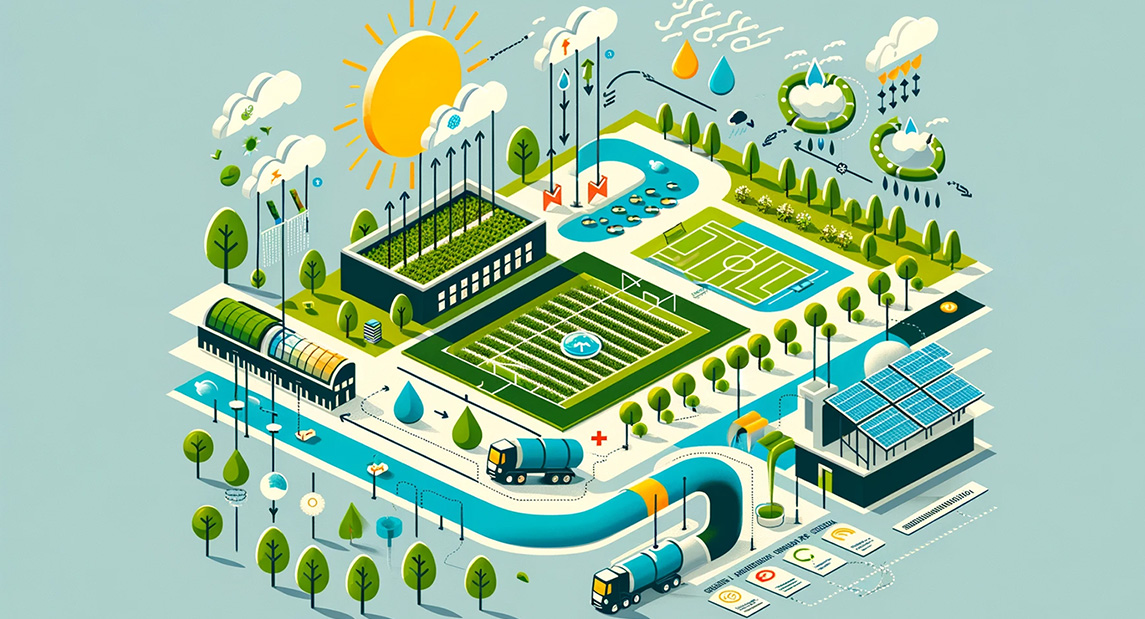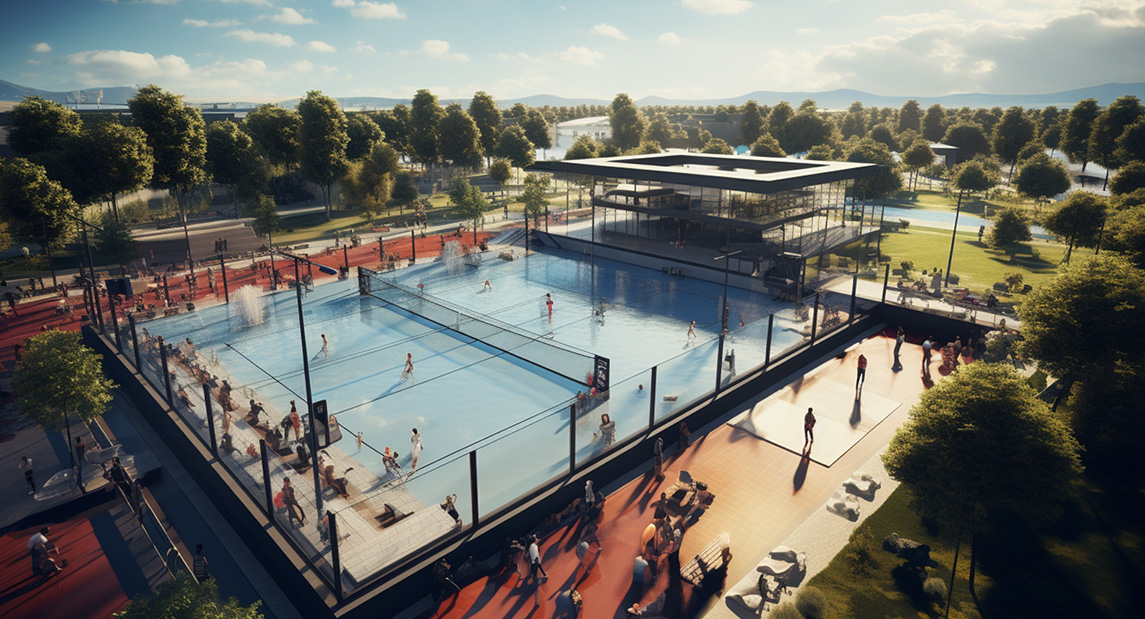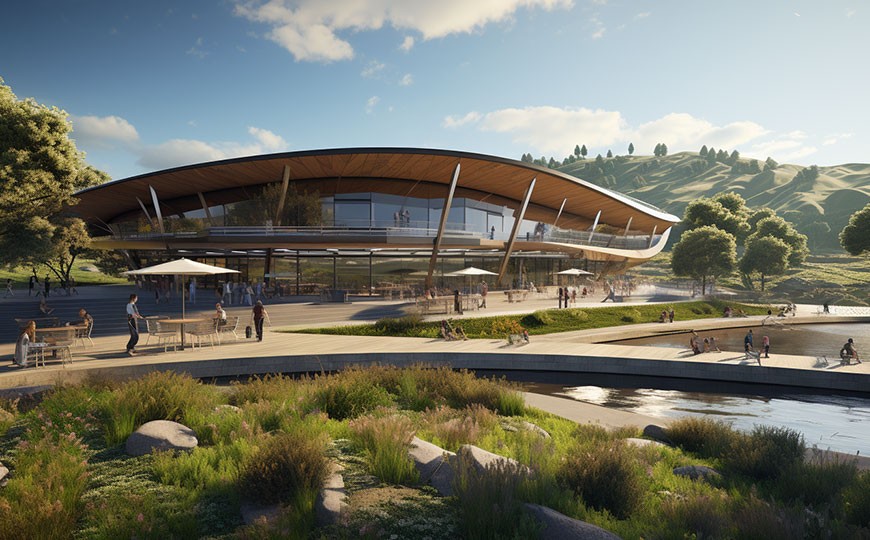Sustainable Sports Facility Construction: Strategies and Benefits
Sustainable Sports Facility Construction: Strategies, Benefits, and Best Practices for Eco-Friendly Sports Outdoor Venues
Introduction
Introduction to Sustainability in Sports Facility Construction
The world we live in is facing unprecedented challenges brought about by climate change and resource consumption. In this critical time, the conception of sports facilities has taken on a new dimension that extends far beyond merely providing playing and exercise fields. Sustainable sports facility construction has emerged as an essential approach to protect the environment and improve the quality of life for people. This approach involves careful material selection, the use of renewable energy sources, and the creation of facilities that are both economically and socially beneficial.
Significance of Sports Outdoor Venues for Society and the Environment
Sports outdoor venues play a central role in society. They serve as gathering places that encourage people of all ages and backgrounds to engage in shared play, physical activity, and social interaction. However, their significance goes beyond sports. They are green oases in urban landscapes, promoting community health and contributing to biodiversity. In times of climate change, they also offer a cool retreat and help reduce urban heat islands.

Aims of the Paper and Brief Description of the Utilized Documents
This paper aims to shed light on various aspects of sustainable sports facility construction and illustrate its significance for society and the environment. Using a series of documents addressing topics such as planning, construction, and maintenance of sustainable outdoor sports venues, we will outline practical strategies and best practices that can help everyone make a positive contribution to this vital area.
Fundamentals of Sustainability in Sports Facility Construction
Definition of Sustainability in the Context of Sports Facilities
Sustainability in sports facility construction is a holistic concept that encompasses the long-term ecological, social, and economic compatibility of sports venues. It is not only about conserving resources and reducing emissions but also about creating facilities that endure for generations and enrich the community. Sustainable sports facilities efficiently utilize natural resources, minimize their ecological footprint, and provide added value to the local population.
Relevance of Sustainability for Sports Outdoor Venues
The integration of sustainability principles into the construction and operation of sports outdoor venues offers various benefits:
Ecological Benefits:
-
Reduction of water and energy consumption. -
Promotion of biodiversity through natural design. -
Contribution to air purification and climate protection.
Social Benefits:
-
Creation of healthy and accessible sports and gathering spaces. -
Promotion of social cohesion through community activities. -
Support for the local economy by using regional resources and craftsmanship.
Economic Benefits:
-
Long-term cost savings through efficient operations. -
Enhancement of the local real estate market's value. -
Attraction for tourism and local events.
Implementing sustainable practices in the planning and construction of sports facilities is not only an ethical imperative but also offers concrete, measurable advantages. By focusing on sustainability, we invest in the future of our communities and our environment.
Planning Sustainable Sports Outdoor Venues
The planning phase is the foundation for the sustainability of a sports facility. This is where decisions are made regarding how efficiently and environmentally friendly the facility will operate. A well-planned facility considers not only immediate needs but also its long-term integration into the environment and community.
Importance of the Planning Phase for Sustainability
Sustainable planning begins with the understanding that a sports facility is more than just a place for sports—it is a living system that is part of a larger ecosystem. Questions about water usage, energy efficiency, and material selection must be addressed from the outset. The lifecycle of the facility must be considered to ensure it enriches rather than burdens the local environment.

Involvement of Stakeholders and Users in Planning
Stakeholders and users play a crucial role in the planning phase. Their involvement ensures that the facility meets the community’s needs and is accepted. Dialogue forums, surveys, and workshops can help gather a wide range of opinions and desires and integrate them into the planning process. This can result in a facility that is not only sustainable but also socially inclusive.
Sustainable Concepts and Design Principles
Sustainable concepts in sports facility construction are based on principles of reduction, reuse, and recycling. For example:
-
Using locally sourced, natural materials reduces transportation costs and CO2 emissions.
-
Rainwater management: Systems for collecting and reusing rainwater for field irrigation can significantly reduce water consumption.
-
Energy efficiency: Orienting buildings and fields to optimize sunlight and warmth utilization and the use of solar panels for energy generation.
These principles form the basis for a design that is not only functional and aesthetically appealing but also environmentally protective and resource-efficient.
Construction of Sustainable Sports Outdoor Venues
Constructing a sports facility offers numerous opportunities to practically implement sustainability. Every step in the construction process, from material selection to methodology, has an impact on the environment and the efficiency of the finished facility.
Selection of Sustainable Building Materials and Technologies
The use of sustainable materials is central to eco-friendly sports facility construction. Materials such as recycled concrete, FSC-certified wood, or locally sourced stone represent environmentally conscious choices. Modern technologies, like photovoltaic panels or energy-efficient LED lighting, contribute to reducing energy demand.
Energy and Resource Efficiency During the Construction Process
Energy and resource efficiency during construction involve optimizing construction processes and minimizing waste. This can be achieved by:
-
Modular construction: Prefabricated elements shorten construction time and reduce on-site waste.
-
Energy-efficient construction equipment: Using electric vehicles and machinery reduces emissions during the construction process.
-
Construction waste management: Separation and recycling of construction waste reduce the need for landfill space and conserve natural resources.
Case Studies of Sustainable Sports Facility Construction
Case Study 1: Ecological Football Stadium in Freiburg
The SC Freiburg Stadium is a showcase project for sustainable sports facility construction. It features a photovoltaic system on the roof that generates more electricity than the stadium itself requires. Rainwater is collected and used for field irrigation. Materials were mostly sourced locally, and the transportation infrastructure was designed to encourage visitors to use public transportation.
Case Study 2: Sustainable Gymnasium in Norway
In Norway, a gymnasium was built entirely from local wood and with state-of-the-art insulation to minimize energy consumption. The gymnasium utilizes geothermal energy for heating and features large windows that provide natural lighting, reducing the need for artificial lighting.

Maintenance and Operation of Sports Outdoor Venues
A sustainably designed sports outdoor venue maintains its value and functionality only through equally sustainable maintenance and operation. This pertains not only to the longevity of structural elements but also to the continuous care of green spaces and the social role of the sports facility within the community.
Sustainability-Oriented Maintenance
Sustainability-oriented maintenance of sports outdoor venues prioritizes both the preservation of the facility and environmental protection. This includes:
-
Environmentally friendly maintenance: Using electric maintenance equipment to reduce noise and air pollution and opting for organic fertilizers instead of chemical products.
-
Resource-efficient maintenance: Employing energy-saving tools and machinery and implementing irrigation systems that accurately measure plant water needs to avoid overwatering.
-
Maintenance of play areas: Using durable yet environmentally friendly materials for play surfaces to minimize the need for frequent replacements.
Facility Management to Promote Longevity
Facility management with sustainability in mind involves careful monitoring and maintenance of all facilities. This includes:
-
Preventive maintenance: Regular inspection and maintenance of facilities to avoid major repairs and breakdowns.
-
Staff training: Providing training for staff in environmental conservation and sustainable maintenance practices.
-
Management flexibility: Adaptability of the facility to future sustainable technologies and practices.
Integration of Eco-Friendly Operational Practices
The daily operational practices of a sports outdoor venue should adhere to sustainability principles. This encompasses:
-
Energy efficiency: Utilizing LED lighting, solar energy, and other renewable energy sources to minimize energy consumption.
-
Waste management: Comprehensive waste separation and recycling programs to reduce waste generation.
-
Eco-friendly transportation concepts: Promoting bicycle use and public transportation for visitors and facility staff.
Social Benefits and Ecological Aspects
Sports outdoor venues offer more than just space for physical activity; they have a significant impact on community life and the ecology of their surroundings.
Contribution of Sports Outdoor Venues to Social Integration and Health
Sports outdoor venues promote social integration by bringing together people from different demographics and providing a shared space for interaction. They contribute to public health by offering places for physical activity and relaxation, thereby enhancing well-being.
Ecosystem Services and Biodiversity
Sports outdoor venues can provide a range of ecosystem services by improving air quality, contributing to climate protection, and serving as habitats for plants and animals. They play a crucial role in preserving biodiversity in urban areas.
Innovations and Future Developments
The field of sports facility construction is dynamic and subject to continuous change driven by innovations and new scientific insights. These developments have the potential to fundamentally transform how we plan, build, and operate sports outdoor venues.
Introduction of Innovative Approaches in Sports Facility Construction
Innovative approaches in sports facility construction encompass various aspects, from new materials and construction methods to advanced energy management systems. Here are some examples:
-
Biophilic Design: The integration of natural elements into sports facility construction to strengthen the connection between humans and the environment and enhance well-being.
-
Smart Buildings: Utilizing Internet of Things (IoT) technologies to optimize building energy systems and make space utilization more efficient.
-
Sustainable Water Management: Developing facilities that utilize and treat water from the environment to reduce dependence on municipal water systems.
Discussion of Future Trends and Research Directions
Future trends in sports facility construction may focus on increased use of renewable energy, improving carbon footprints, and advancing Cradle-to-Cradle concepts. Research directions may include the lifecycle of building materials and their reuse or recycling, as well as the development of construction methods that minimize environmental impact.
Challenges and Opportunities for Practice
The most significant challenges in practice often revolve around financial considerations or the implementation of innovative ideas that have not yet become established. However, these innovations offer enormous opportunities, especially in terms of operational cost savings and the positive impact that a modern, environmentally conscious sports facility can achieve.
Conclusions
The importance of sustainable sports outdoor venues cannot be overstated. They are an essential component of a forward-thinking and environmentally conscious society, offering far-reaching benefits for both the environment and the community.

Summary of Key Findings
From the information presented, it can be concluded that sustainable sports facility construction is a complex endeavor that requires comprehensive planning, innovative construction approaches, meticulous maintenance, and responsible operation. The involvement of all stakeholders and the synergy between humans and nature play a crucial role in this process.
Reflection on the Significance of Sustainability in Sports Outdoor Venues
The sustainability of sports outdoor venues contributes to a healthier environment by reducing resource consumption, promoting biodiversity, and lowering CO2 emissions. It also has a social aspect, as it strengthens the community, fosters social integration, and contributes to public health. Sustainable sports facilities are not just places for sports; they are symbols of a community that values health, the environment, and social cohesion.


 Español
Español Deutsch
Deutsch English GB
English GB




Leave a Reply Cancel Reply